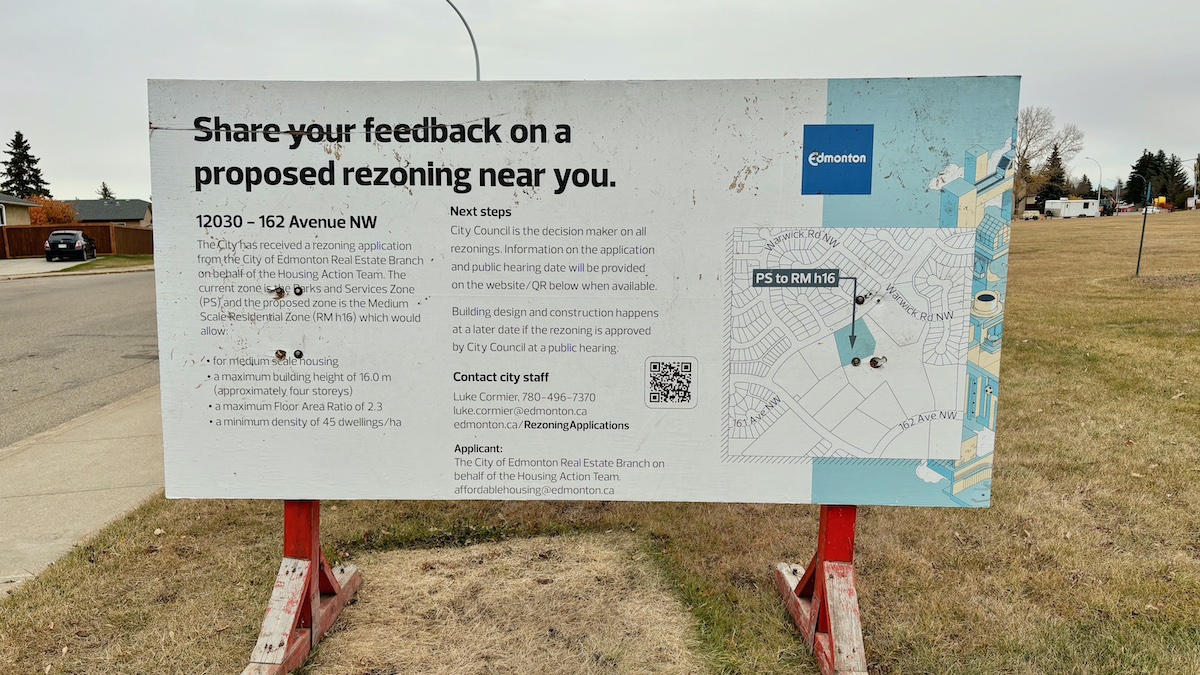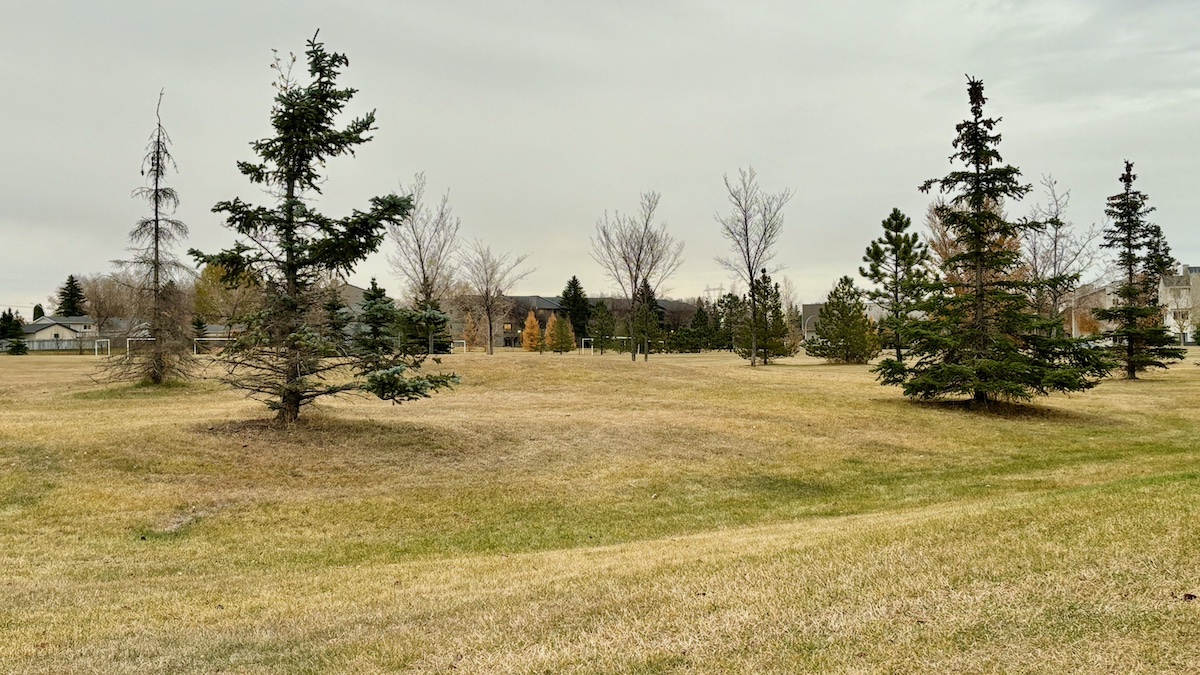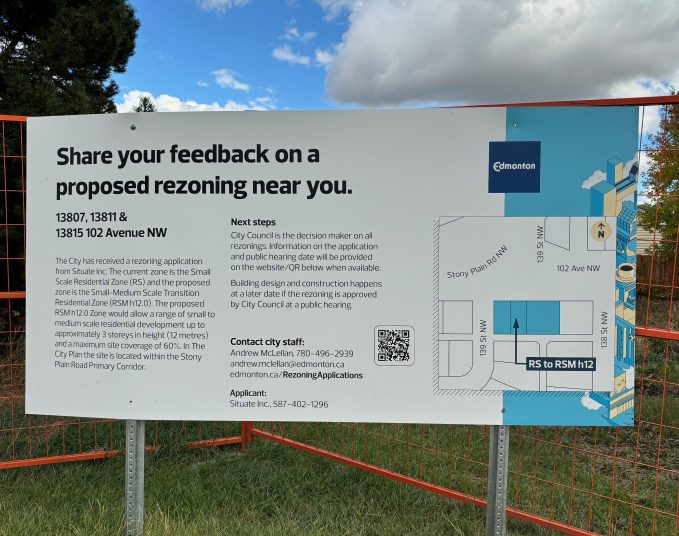“The needs of the many outweigh the needs of the few, or the one.”
— Vulcan proverb
Mr. Spock himself would have been fascinated by the debate on how the City hopes to stimulate affordable housing growth.
The City of Edmonton has a stated goal that 16 per cent of homes should be off-market and affordable. And that goes for every neighbourhood in the city. It can’t be that one part of town has a ratio of 30 per cent, while Glenora has none.
We’re not close to that right now.
The City also has 20 plots of land that it wants to use. These are in aging neighbourhoods, that had land reserved for schools, but now those schools aren’t needed. (The rush for new schools in Edmonton is out in the flourishing ‘burbs near the Henday, not in the older neighbourhoods.)
This week, City Council approved zoning changes to plots in Summerlea (just north of West Edmonton Mall), Lymburn, La Perle, Belmont and Dunluce. More will come. But while the votes weren’t close (12-1 was as tight as it got), there was plenty of debate. And while there were neighbours who came to council to voice their concerns and opposition, council members kept talking about how they had to look after the needs of the city as a whole.
It was truly a very Vulcan, logical approach.
“Sometimes we see these situations where one group of neighbours in one particular community may not particularly like something,” said Coun. Michael Janz. “However, on balance, the million people of the city have said this is the kind of thing that we need to see more of.”

THE NEED
There were a cadre of social agencies who came to City Hall to voice their support for the conversion of surplus school land for affordable housing developments.
Nicole Wilke is the director of policy and strategic planning for Civida, the social housing agency that administers more than 5,000 homes for 15,000 Edmontonians in need. She said that Civida’s waitlist has 26,000 people on it, and approximately 700 more names are added to it monthly. With a vacancy rate of one per cent, it’s not like the existing residents are turning over quickly.
Think about it: Civida’s waitlist has more people on it than the agency is actually serving at the moment.
Wilke said these land conversions are badly needed.
“Affordable housing needs across the city remain significant and will continue to grow, necessitating continued investments in new developments, redevelopments and infrastructure renewal to meet the demand.”
Jacqueline Alderton is the director of policy and research for the Alberta Seniors and Community Housing Association. She said that affordable land for social housing is “scarce,” so these 20 plots represent a great opportunity for the city as a whole.
“We can’t build fast enough to cover the need.”
Also lending her voice to the debate was Edmonton Federation of Community Leagues’ (EFCL) Executive Director Laura Cunningham-Shpeley.
“Though we know that even projects of this scale and scope will not address the totality of the city’s housing needs, we also know that the status quo does not serve anyone — not the people in urgent need of housing, not the communities dealing with the downstream effects of an inadequate housing supply, and not the thousands upon thousands of new Edmontonians who are arriving in our city every year, driven in part by the promise of a thriving, affordable city to call home.”
Salome Asea, director of programs and accountability for the Africa Centre, said that affordable and social housing will help Canada manage its immigration boom. She points out there’s a gap between the number of immigrants Canada is welcoming, and the housing and programs available to help them adjust to their new lives. We are bringing in more immigrants, but we don’t have the housing for them. There’s a disconnect.
“We bring in migrants to help shore up our economy and [fill] labour gaps, without investing in the support systems that would help these migrants to thrive,” said Asea.
THE OPPOSITION
There were residents who came to speak in opposition to these approvals. Dunluce’s opposition was the most organized out of the bunch. That community is set to undergo an urban renewal, that could potentially see some of the tree canopy removed and will also reduce street parking. This has already antagonized many residents. Heck, they even formed an action group called the Stop the Destruction of Dunluce committee.
And Janine Cyr, who was a member of the community, was not only angry about the prospective rezoning, but the EFCL’s support of it — which she felt overstepped the organization’s mandate to back its members. If Dunluce’s community is against the project, how can the EFCL back it?
When asked about it, Cunningham-Shpeley said the organization can act as a facilitator between residents and those who want change.
“Our role can be how to have those conversations.” In the end, the EFCL wants “wins for the community.”
There were complaints about increased traffic and the potential for crime. One Belmont resident even suggested she will need to lock her gate at night. But, Coun. Aaron Paquette pointed out that these school lands were always meant to be high-traffic areas. After all, they were initially zoned to have schools on them. And, as Coun. Andrew Knack said, this isn’t a new discussion — the communities were aware that these school lands were going to be converted. It’s not an “if,” but a “when.”
And Coun. Anne Stevenson questioned the NIMBY undertones in the council chamber.
“I’ve never asked my neighbours if I can move in next to them. It’s not something I’ve had to do.”
But where council did have some sympathy was La Perle resident Marsha Littlefair’s argument about how affordable housing was to be spread out in the community. The goal is for every community to be at 16 per cent off-market housing; but the reality is that it can only go where land is affordable. So, communities that are more affordable will carry the load, while the posh neighbourhoods won’t get close to doing their share.
Imagine selling the idea of 16 per cent affordable housing in Glenora? In Crestwood? It could be argued that the residents don’t even know there’s such a mandate.
But, Paquette said the City can’t pick winners and losers — when, in fact, Edmonton needs affordable housing pretty well everywhere.
“Ideally change would be gradual, steady and predictable. That’s what we all want — the ability to plan for the future with confidence. But the reality is that we’re living in a rapidly changing world. Our city is growing fast and the pressures of population growth, housing demand and economic shifts aren’t something we can afford to ignore.”
Maybe Paquette has a hint of green blood.
Savvy AF. Blunt AF. Edmonton AF.




